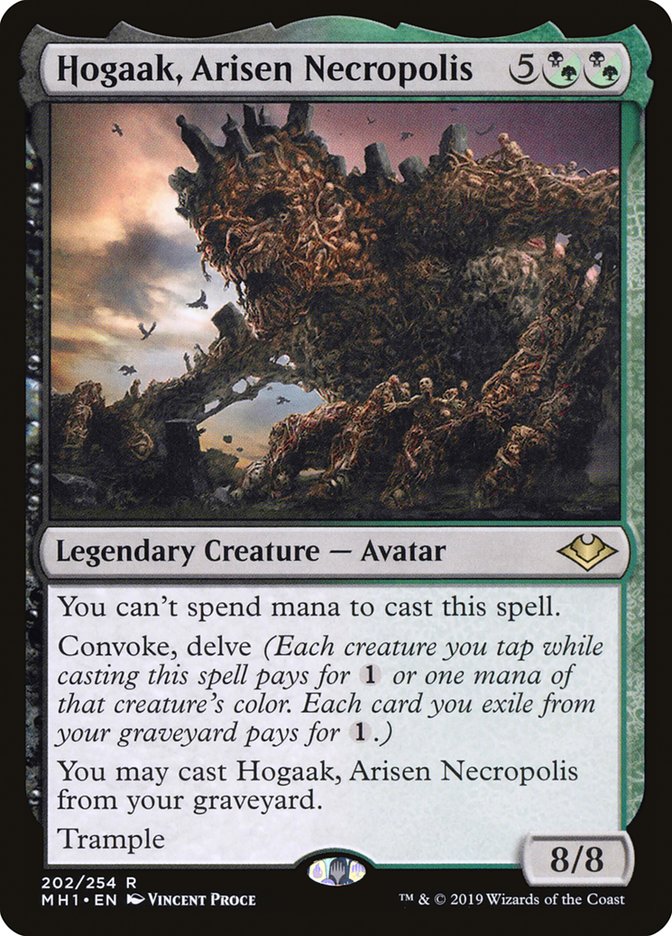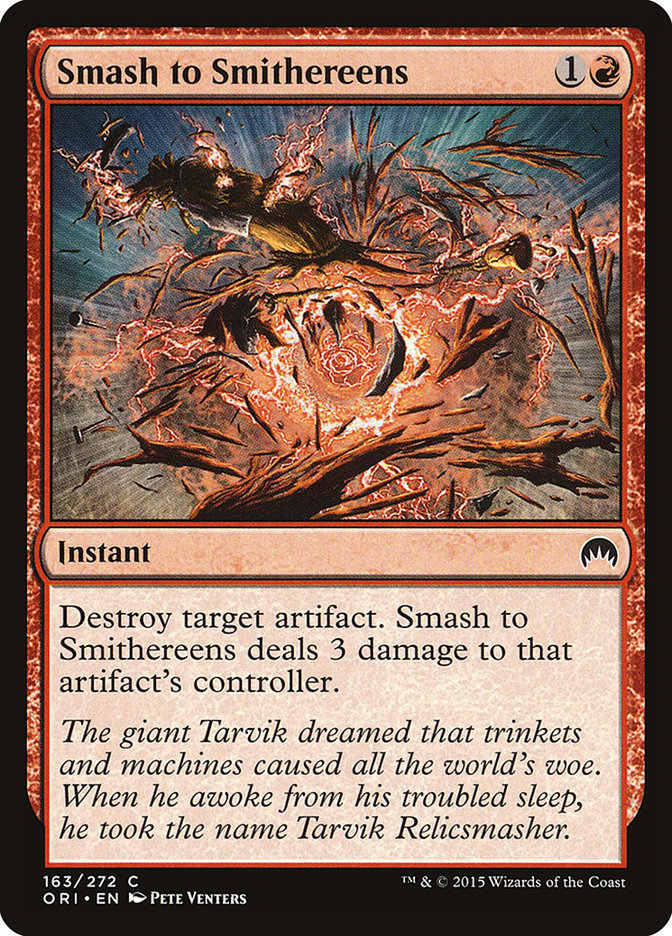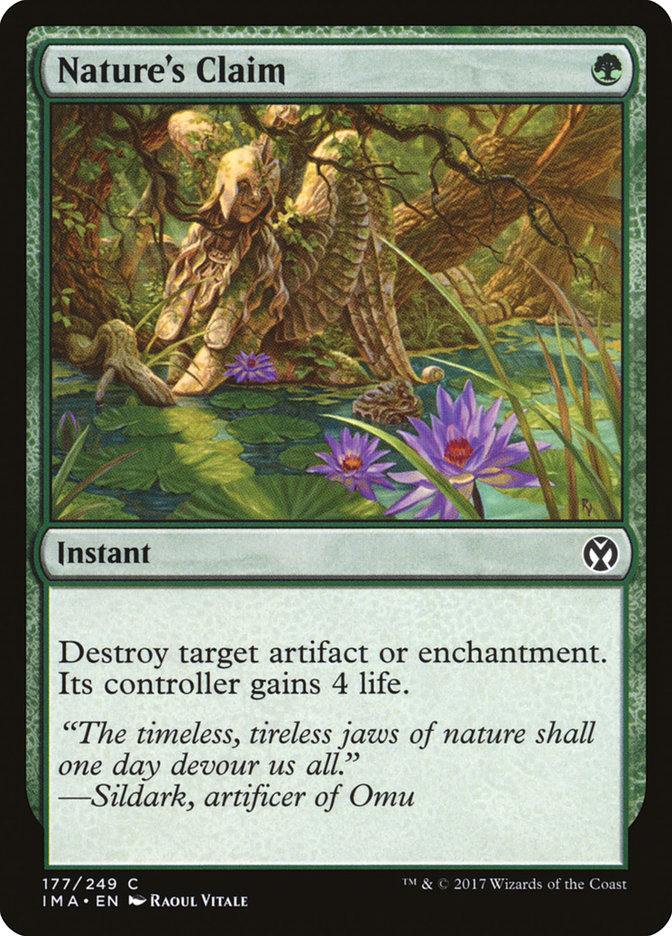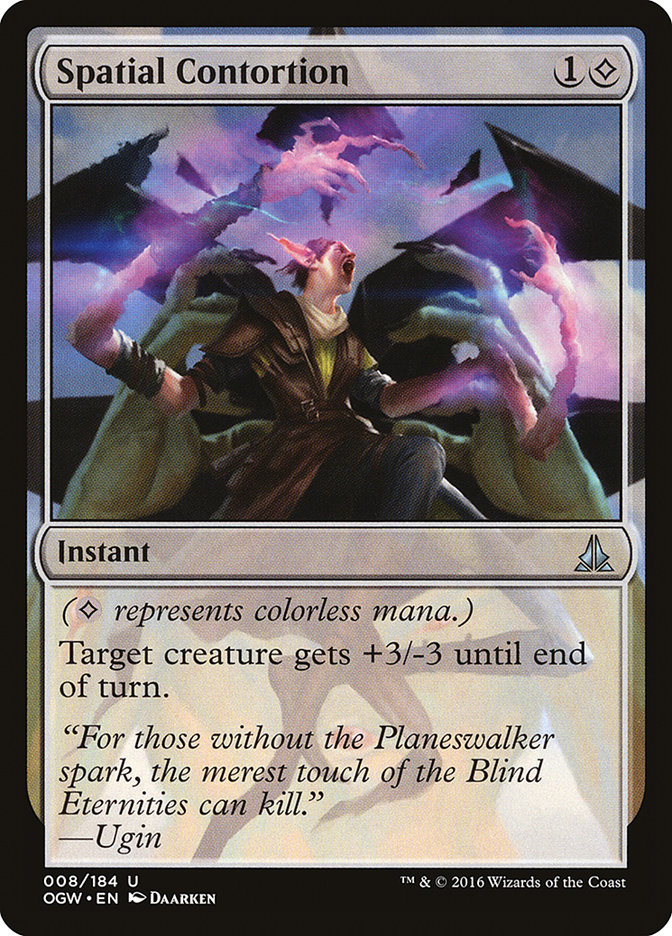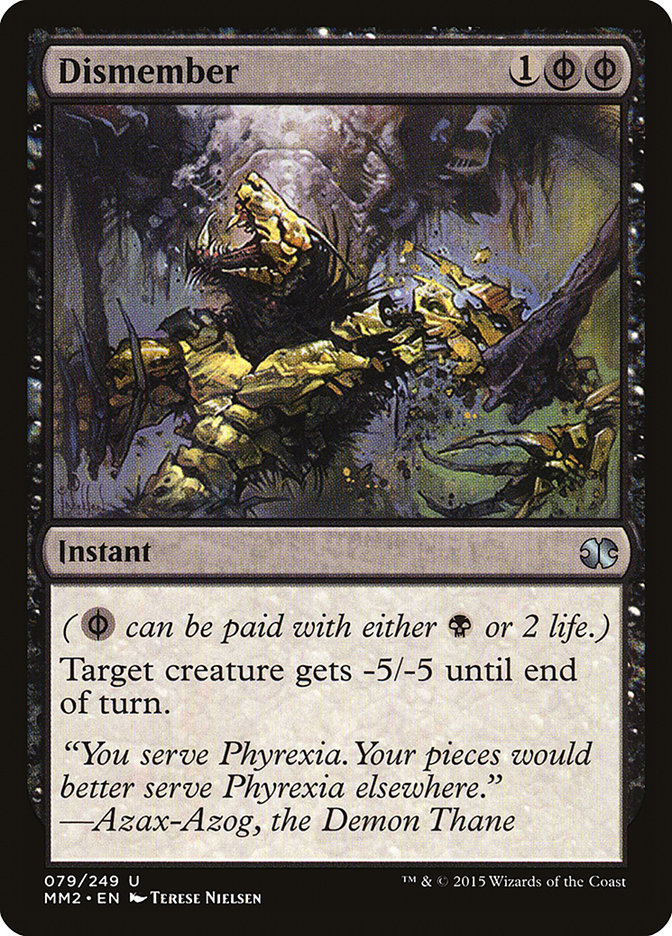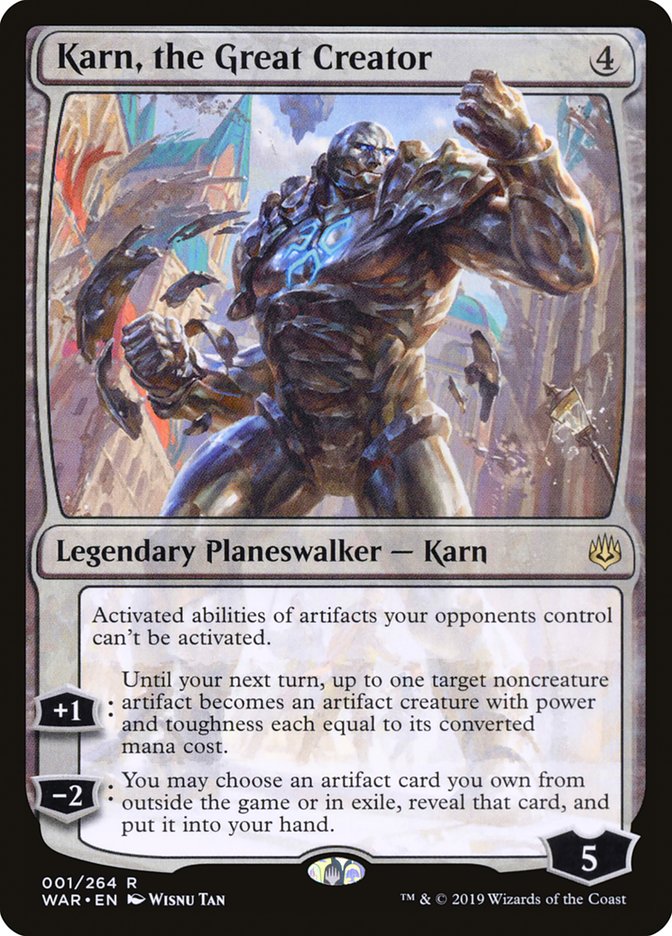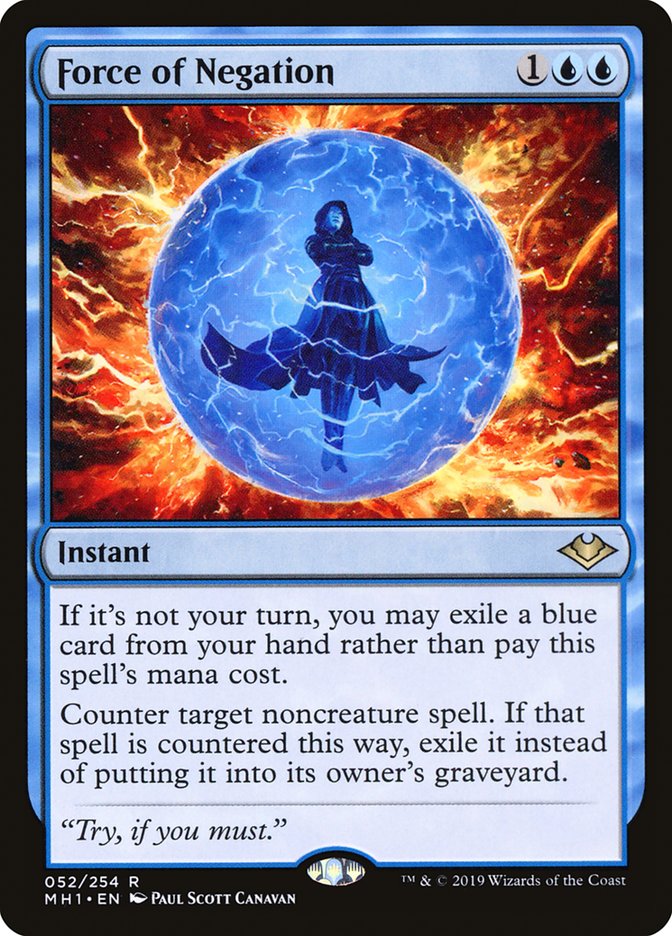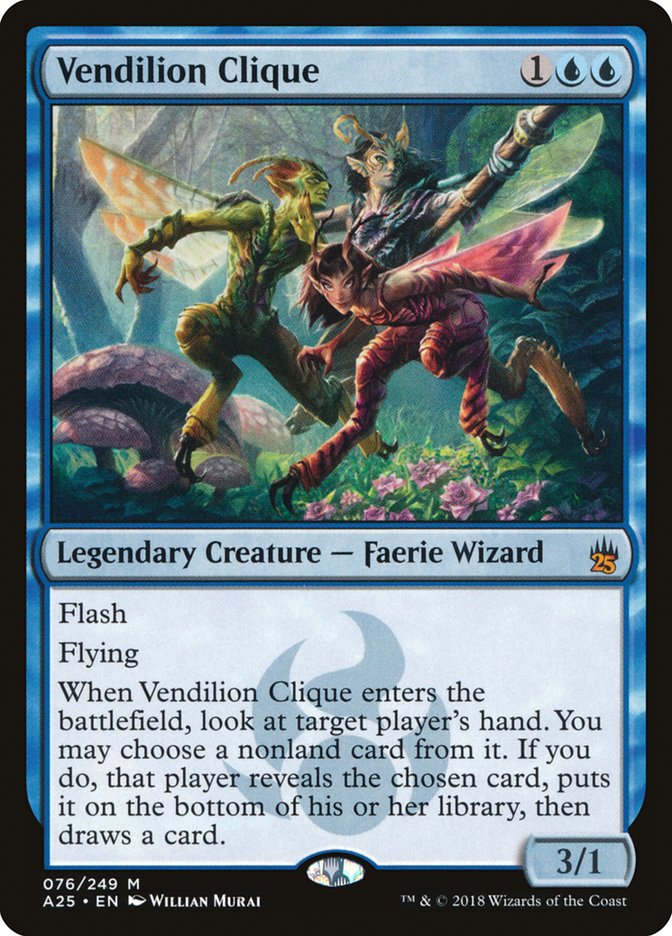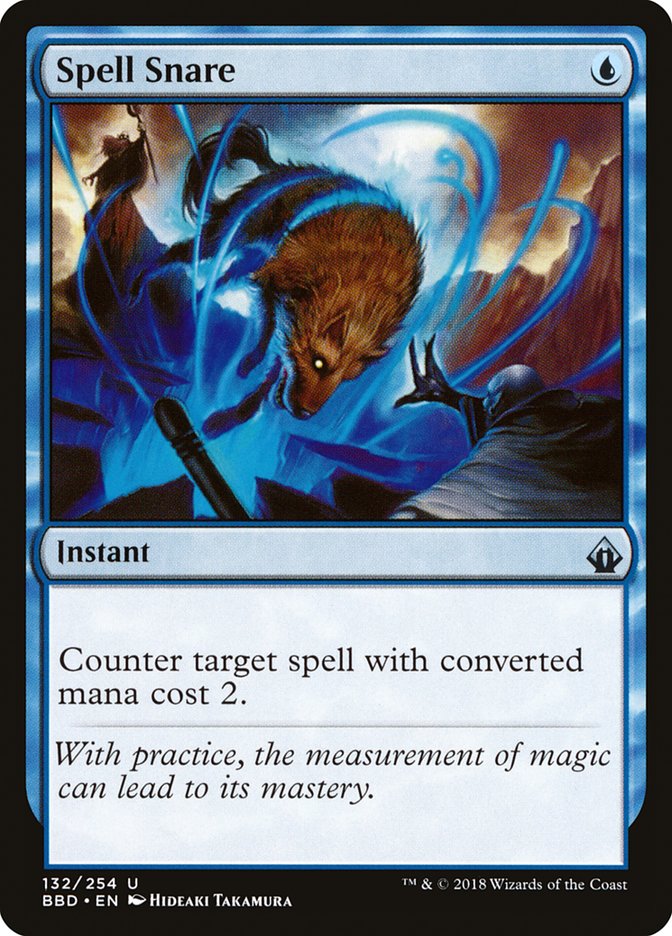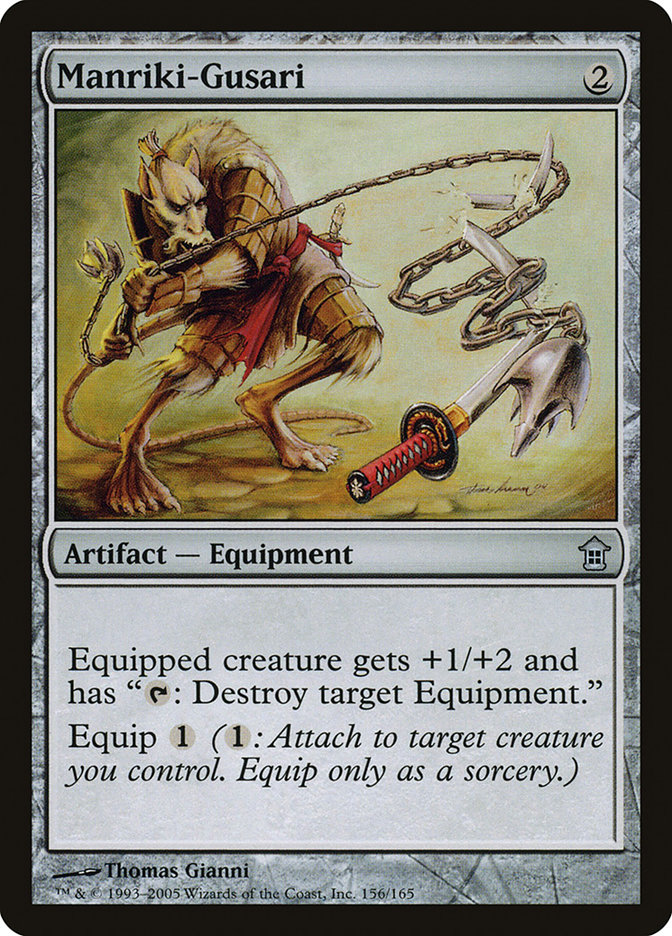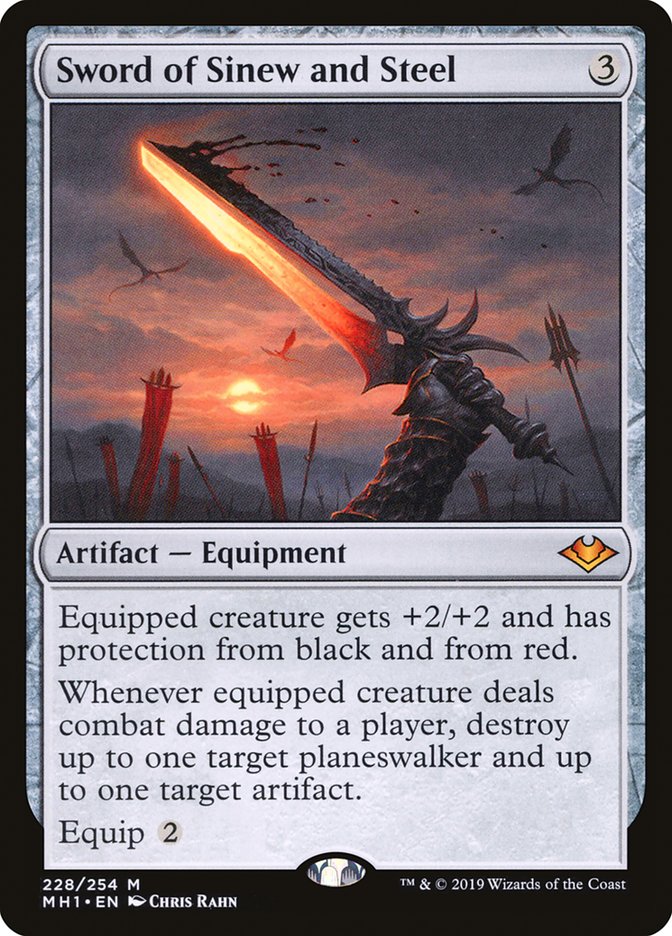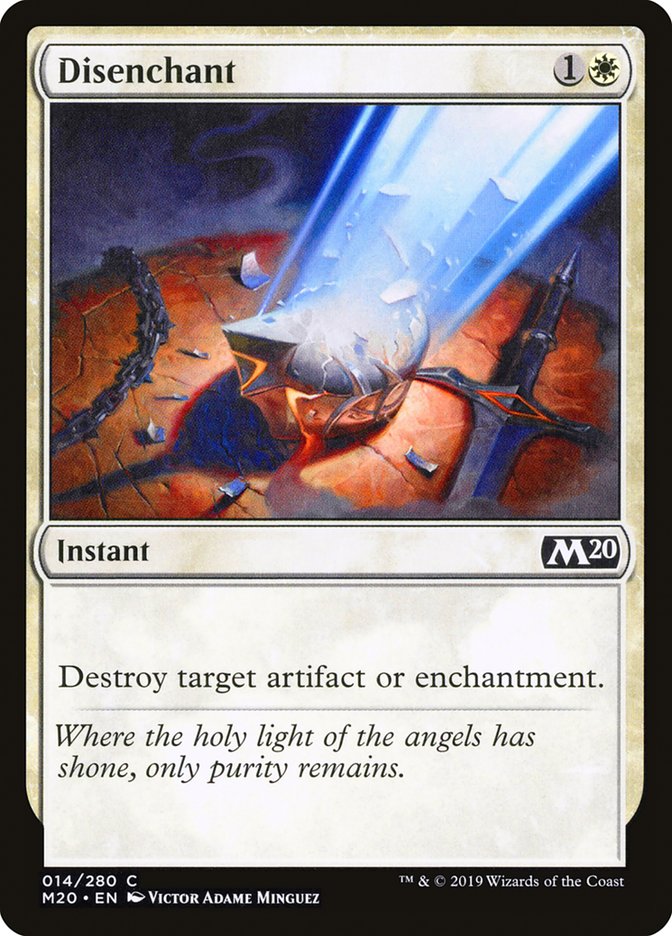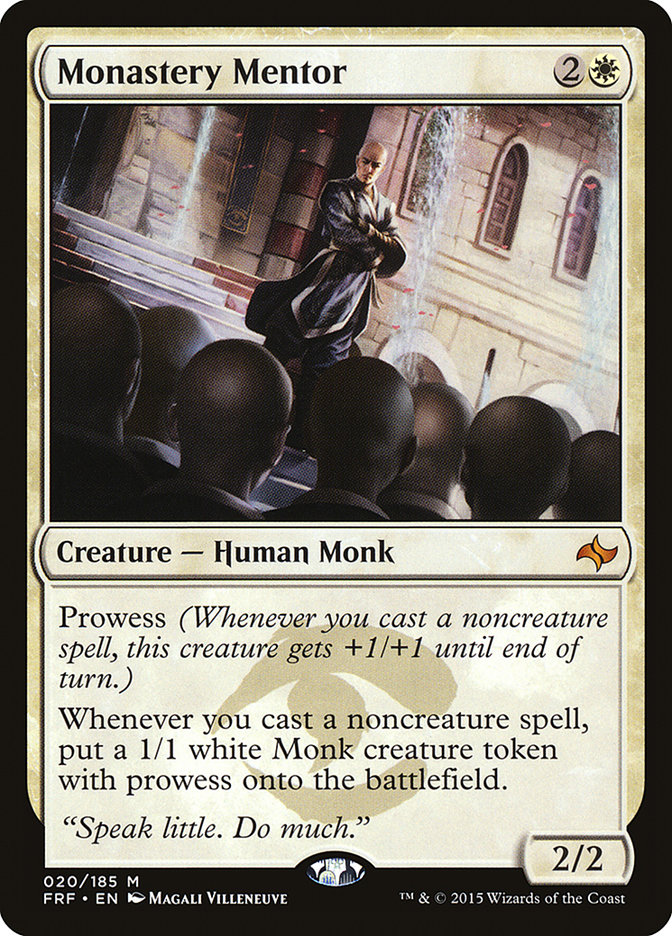When I saw the news that Stoneforge Mystic was unbanned in Modern, I was
legitimately surprised. The card was so powerful in Standard that it was
the first card banned in that format in roughly eight years. Jace, the Mind
Sculptor joined it on the banlist with the June 2011 update, as Azorius
Caw-Blade was widely considered to be the most powerful Modern-era Standard
deck of all time.
Players have longed to see what Stoneforge Mystic could do in Modern. As
the format evolved over the years and became more and more degenerate,
linear, and non-interactive, many players chimed in on social media to
opine that a two-mana 1/2 being banned when Grishoalbrand, Ironworks,
Dredge, and Izzet Phoenix were legal was rather preposterous. They had a
point considering a fair number of games were effectively decided or
literally over by the time Batterskull could enter the battlefield on Turn
3.
The counterargument for this was stated by Wizards of the Coast in an
earlier banlist update. They stated during the Krark-Clan Ironworks ban
update that Azorius Control was the second most successful deck in the
format behind Ironworks. The minds at WotC knew that Stoneforge Mystic was
likely a card that Modern could handle but they were wary of making Azorius
Control too powerful. This was a solid assessment because it seems like the
outcomes represent a stark dichotomy. One of two things can happen:
1. Stoneforge Mystic gets unbanned and the degenerate decks kill you anyway
and don’t care about your incredibly efficient threat that provides card
advantage.
2. Every white deck plays Stoneforge Mystic and it’s way too powerful, too
oppressive, and it forces other white threats and other white strategies
out of the metagame by homogenizing every reactive strategy into an
Azorius-based Stoneblade deck.
When the player base is as critical of the banlist as they are, it’s
terrifying to unban something and be wrong. The former result sort of
renders both sides moot. The advocates for Stoneforge Mystic get to play
with it but still lose to degenerate decks that attack from different
angles. Those who say unbanning is wrong can point to the lack of impact
the card made and say that it was obvious that it wouldn’t solve any of the
problems in the metagame.
In a way, nobody is right.
That said, the latter outcome is much more dangerous. The supporters of
Stoneforge Mystic are saying things like “the matchups are interesting,
this isn’t that bad!” and “it’s better than dying on Turn 3!” The
detractors would be louder than ever if six of eight Top 8 slots were
Stoneforge Mystic decks and other options had been rendered obsolete.
Negative feedback towards WotC is always way louder than any support so, in
a way, this outcome makes everyone feel bad.
What actually happened in
the latest Banned & Restricted announcement
is appreciably different than either of the situations we previously
alluded to. Because of the unique way they went about this update, I’m
rather optimistic about the state of Modern. The announcements were unique
because they did two things besides unbanning Stoneforge:
Hogaak, Arisen Necropolis was obviously a completely broken Magic card.
It’s banning felt like a case of “when” not “if”. Sooner was certainly
better than later since the viable options that didn’t include The ‘Gaak
were relatively slim. The banning of Faithless Looting was particularly
important because it skewed the prospective new metagame towards fair
decks. Faithless Looting was without question the number one enabler of
degenerate and hyperlinear things in Modern. Pairing these bans, which most
Modern pundits considered to be a long time coming, with the unbanning of
Stoneforge Mystic causes a drastic shift in the climate of Modern. It seems
like Stoneforge Mystic should slide into a bunch of fair decks that had
been rendered obsolete before, right?
So, why didn’t Stoneforge dominate the Top 8 of SCG Dallas? That’s the
question we really want to answer.
I think I can speak to that a little bit. What I think happened was that
the metagame grossly overcorrected in anticipation of a huge influx of
Stoneforge Mystic decks. Several prominent players were advocating for
Mono-Green Tron decks which have been historically great against control as
well as fair Stoneblade” style blue decks. When you notice that a few Burn
decks managed to make it to the elimination rounds it appears that a few
players tried to level the metagame. Burn has been historically strong
against Mono-Green Tron and, provided that you land on the right level, was
a great choice for SCG Dallas.
Creatures (12)
Lands (20)
Spells (28)
- 4 Lightning Bolt
- 4 Lava Spike
- 4 Lightning Helix
- 4 Rift Bolt
- 4 Searing Blaze
- 4 Boros Charm
- 4 Skewer the Critics
Sideboard

Dylan Donegan has cemented himself as one of the best players on the SCG
Tour. Team Lotus Box was really smart for trying to Burn people at SCG
Dallas a few weeks ago, as his Burn deck was built for a room full of
Stoneforge Mystics with the full four Searing Blazes in the maindeck. Burn
is unique in that it’s able to adapt to the anticipated metagame while
still asking some tough questions.
Being able to play your game in an aggressive and linear way while still
having a suite of stellar reactive cards is the ideal landing spot when
metagaming for what’s essentially a release weekend Modern event. The
format still has a lot of question marks so just killing people is an
entirely defensible stance. Skewer the Critics is another card that helps
to ensure you have a wealth of ways to kill a Stoneforge Mystic in a pinch
and the sideboard cards help to prevent an active Stoneforge from
immediately ending the game. Burn is an even better choice when you
consider that you’re inherently strong against decks like Titanshift and
Mono-Green Tron that try to go over the top of the Stoneforge Mystic
battle.
Creatures (7)
Planeswalkers (10)
Lands (19)
Spells (24)

Speaking of Mono-Green Tron, there was a copy in the Top 8. Sam
Berkenbile’s sideboard was stacked with answers for artifacts and for
Stoneforge Mystic itself.
Nature’s Claim answers an equipment while also being a perfect answer to
Blood Moon, a card that will see a resurgence in popularity now that
there’s so much fair Magic going on. The resurgence has actually already
started in the form of John Lim’s seventh place Rakdos Midrange deck and
it’s three maindeck Blood Moons. Spatial Contortion and Dismember are on
curve answers to Stoneforge Mystic that have a wide swath of applications
in other matchups.
One of the reasons Mono-Green Tron is strong against Stoneforge Mystic
decks is its static ability that shuts down Equipment. Karn also represents
one of the best paths to victory since it enables the Mycosynth Lattice
combo and that spicy Liquimetal Coating in the sideboard pairs with Karn to
do a great Stone Rain imitation.
These decks do a pretty good job of exemplifying why Stoneforge Mystic
didn’t crack the Top 8 in the short term. What does this mean for the
future of the card, though? The Top 16 tells a different story. The 9th,
10th, 11th, and 12th place decks all contained four copies of Stoneforge
Mystic. The 10th and 12th place decks are fairly stock Azorius Stoneblade
decks while the 9th place deck, Jacob Hagen’s Orzhov Smallpox, didn’t exist
at all before the unbanning. Mickey Humphries’s Devoted Devastation is
using Stoneforge to fetch a Viridian Longbow and use it to ping you twenty
or so times with a Devoted Druid. The fact that Stoneforge Mystic is in
control decks, midrange decks, and combo decks is pretty cool or pretty
scary depending on your perspective.
Creatures (20)
Planeswalkers (4)
Lands (22)
Spells (14)

One of the coolest Stoneforge Mystic decks from the weekend comes in at
22nd place in the hands of SCG Tour rising star Ally Warfield. Her deck is
both super fair and slightly unfair as it can lock you with Karn and
Lattice as early as Turn 5. It also has a full suite of Eldrazi that can be
powered out ahead of the curve thanks to Noble Hierarch and Eldrazi Temple.
Eldrazi Displacer is a nice little synergy with Stoneforge Mystic and the
three maindeck pieces of equipment in Ally’s list. It also represents an
inevitability most Selesnya creature decks don’t have. When I said her deck
was super fair, I was mostly alluding to the late-game power of Eldrazi
Displacer and Equipment. Any of those creatures can pick up a Batterskull
or a Sword and close the game out. When you notice the four copies of Karn,
the Great Creator and how they make opposing equipment much worse, it
starts to make sense that Ally had a win-and-in in Dallas on Sunday. Her
deck is beautifully constructed for an Open with a relatively ambiguous
metagame. It does its own thing in a powerful enough way that it can beat
opponents proactively. But Selesnya Eldrazi also has enough interaction
between the maindeck and sideboard that it can stop other decks from doing
their thing.
I think the reality is that this deck is likely to become appreciably worse
when the format gets figured out a little more. This deck plays several
powerful cards, but its strength is that it has good mana and is rather
consistent. Eventually consistency and a medium amount of interaction will
be superseded by a new shade of linear degeneracy. Until then, though,
Selesnya Eldrazi is in a great spot.
We are well over halfway through this piece and I haven’t yet talked about
the Stoneblade decks. I doubt that the lists from last weekend are perfect
but there’s certainly some great things to glean from looking at them.
Let’s start with a Top 16 decklist from one of the best players on the SCG
Tour:
Creatures (9)
Planeswalkers (5)
Lands (24)
Spells (22)

Pete Ingram’s Azorius Stoneblade deck looks like a great place to start if
we’re evolving the archetype for future Modern events.
Force of Negation might be the most important card in this list. The fact
that you’re playing a deck that has a lot of reactive elements and you’re
able to tap out for your game-changing threat without dying or falling far
behind is so huge. Against decks like Burn, which will likely remain
popular, you can protect your Stoneforge Mystic with Force of Negation and
it also lets you survive a crucial turn against decks like Neoform and
Mono-Green Tron.
One important thing to remember is that you can’t use Force of Negation to
protect your creature when you’re setting up a Sword or Feast and Famine
hit since it’s only free on the opponent’s turn. This isn’t something that
comes up too often but is important to keep in mind, nonetheless.
Another great synergy with Force of Negation and Stoneforge Mystic is that
your ideal turn to untap with Stoneforge Mystic is Turn 3. Force of
Negation conveniently costs three mana to hardcast so it sits well on top
of your three open mana when you pass with an active Stoneforge. The fact
that you can also cast the card for free to get your Equipment onto the
battlefield while still reacting to something the opponent has presented is
incredibly powerful.
Due to all of these factors, I think every Azorius-based Stoneforge Mystic
deck should play multiple copies of Force of Negation.
Teferi, Time Raveler is great in a Stoneforge Mystic metagame because the
-3 ability bouncing their Mystic is a huge tempo swing in any mirror or
pseudo mirror. The opponent will need to spend a turn either recasting
Stoneforge Mystic or trying to deal with Teferi. Further, all of their
counters are turned off until they answer Teferi so you can deploy your
threats with impunity. Teferi also has a wide swath of applications against
the rest of the format, as it shuts off opposing counterspells, randomly
hoses Ancestral Vision or Living End, allows you to cast Supreme Verdict at
instant speed against creature decks, and provides a temporary answer to
problematic permanents like Ensnaring Bridge or Chalice of the Void.
As Stoneforge Mystic decks evolve and get built better and better,
Vendilion Clique will correspondingly increase in its importance and
relevance. Clique is great at wearing equipment and mitigating the power of
opposing Stoneforges while also having a lot of value against unfair things
like Mono-Green Tron or Storm. The line of Stoneforge Mystic on Turn 2
fetching Sword of Feast and Famine, Vendilion Clique on Turn 3, and
activate Stoneforge Mystic + equip and hit on Turn 4 is a great line
against almost any combo-oriented deck.
Stoneforge Mystic, Eidolon of the Great Revel, Searing Blaze, Thopter
Foundry, Devoted Druid, Goblin Engineer, and Sylvan Scrying are all cards
that showed up in the Top 16 decks from SCG Dallas. Spell Snare was a
powerful card when it was countering Bitterblossom, Vampire Hexmage, and
Stoneforge Mystic in Extended ten years ago and has always had fringe
applications in Modern but will be one of the best counterspells when
there’s a preponderance of high impact two-drops. Stoneforge Mystic getting
unbanned and the subsequent resurgence of Mono-Green Tron and Burn all
contribute to the current Modern climate being two-drop dense and therefore
ripe for Spell Pierce.
The aforementioned cards are all in Pete’s deck in some number and I think
they’re all going to increase in value going forward. Obviously, there’s
other cards that are of importance to the archetype – Jace the Mind
Sculptor, Batterskull and the Swords, Cryptic Command – but these are
usually in the deck in some number no matter what. I thought there was more
value in looking at some of the flex slots and some of the newer cards.
Lastly, I would like to discuss a few sideboard cards that I think will be
great in Azorius going forward.
These cards are likely going to see an uptick in popularity in light of the
unban. Manriki-Gusari is almost exclusively for the mirror but is also
valuable against Death and Taxes type decks that have been popping up in
the past two weeks in Modern.
Sword of Sinew and Steel is a new card from Modern Horizons but
I’m unsure how good it is. Manriki-Gusari is much better if you’re
primarily using the slot for other Stoneforge Mystic decks but Sword is
better if the format is less mirrors and more Affinity, Mono-Green Tron,
and Four-Color Whirza. Manriki-Gusari is much cheaper to hardcast and
cheaper to equip but it’s also way narrower. I’m still not sure which is
better but I’m leaning towards Manriki, provided that you’re also hedging
with Disenchant.
Speaking of Disenchant, it’s fantastic against all the above as well as
having applications against other Modern decks. I think Disenchant will go
from a maybe one of to a two or even three of in Azorius Control and
Azorius Stoneblade going forward.
Lastly, Monastery Mentor is very interesting because it provides additional
bodies for your Equipment, is very good in attrition-based matchups like
the mirror and Jund and is excellent alongside Force of Negation.
The Future Is Stoneblade
Honestly, I’ve never been more excited about Modern. It looks interactive,
fun, and wide open and I might even make the drive up to SCG Syracuse this
weekend just for the Modern Classic and not play in the main event!
If you play in the Modern Classic this weekend, do me a favor and make sure
Stoneforge Mystic is in your deck. You’ll be glad you did.


